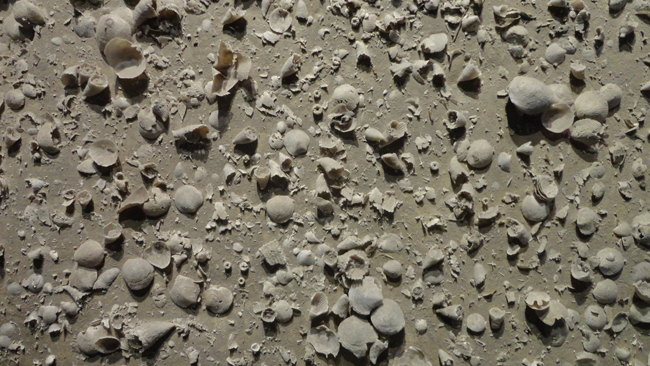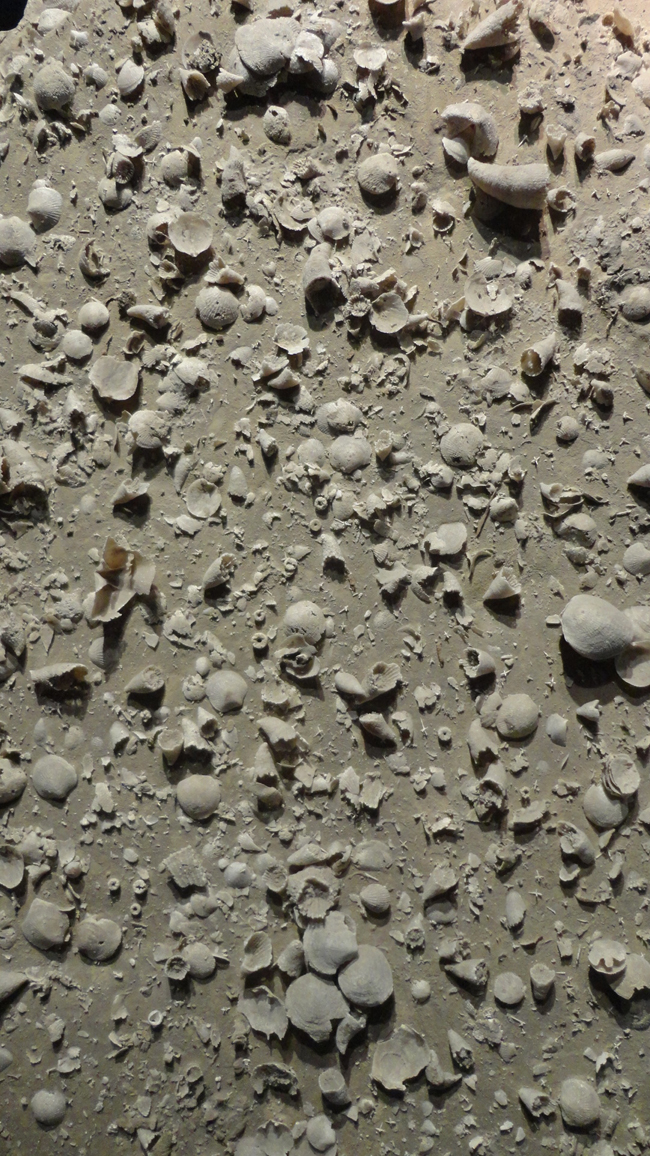
Good lighting on these fossils at the Royal Tyrrell Museum in Drumheller, Alberta, eh?
You’ve got a batch of brachiopods mixed with crinoid columnals and little cornucopia-shaped rugose corals. Maybe some sponge spicules in there, too…

This is a great rock because (a) it’s full of well-preserved fossils in a fine-grained matrix, and (b) it’s been weathered so that the fossils poke out in high relief.
But the way the museum displayed it, with the excellent low-angle lighting, makes all the difference. It really “pops”!

Nice! This would be a good GigaPan subject, eh?
Agreed. Closer to home, you could also see about Gigapanning some siliceous Permian invertebrate fossils, from the Glass Mts. of Texas, at the Smithsonian (G.A. Cooper collection). They are pretty spectacular.
A woderful place to explore invertebrate fossils is here :
http://www.gerstetten.de/download/10-riff-museum-english.pdf
https://www.google.de/search?hl=de&tok=4I2bHBO7q7AFdyHLRHW_ew&cp=18&gs_id=2gh&xhr=t&q=koralle+gerstetten&newwindow=1&safe=off&bav=on.2,or.r_gc.r_pw.r_qf.&bpcl=38897761&biw=1280&bih=683&um=1&ie=UTF-8&tbm=isch&source=og&sa=N&tab=wi&ei=-ai3UN_3LoTmtQa4xIDICA
In this little museum you can find a huge display of late Jurassic corals. In the surroundings of the museum, it’s pretty easy to find your own coral.
While in school at Ohio Wesleyan I came across a chunk of Upper Ordovician limestone in Wisconsin till near the east bank of the Olentangy River. Fossil brachiopods weathering out scratched my knife blade, so I dissolved the rock in HCl and obtained some beautiful small shells very purely silicified and white in color. Zygospira and Dalmonella and other brachiopods were abundant in the residues going down to shells of just a two or three mm length. I still have some of the fossils and treasure them. You would think you were walking around on the Cincinnati Arch based on the species. The source of the erratic was probably Ontario Province. In fact not long after that I saw an Ontario road map bearing a color photo of a chunk of partially-dissolved Upper Ordovician limestone rich in silicified fossil brachiopods and corals with a caption indicating the fossils had been collected in that Province.